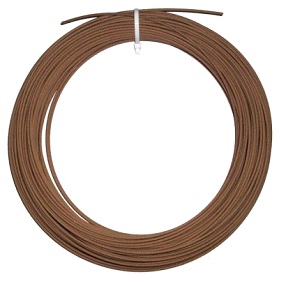FDM, or fused deposition modeling, is probably what most people think of when they hear about 3D printing for the first time. FDM literally is printing – but in 3D!
Unlike SLA, SLS, DMLS or other similar 3D printing technologies, FDM doesn’t involve lasers and is much more straightforward. Thermoplastic or elastomer string is extruded through a heated nozzle that melts the plastic as it travels through it.
The nozzle is moved horizontally in the X and Y directions by a computer, which also controls the flow of plastic, switching it on and off as needed. The molten material is deposited in small beads in the shape of the printed object’s cross-section, and immediately hardens. Layer by layer, cross-section by cross-section, the object and its supports (if needed) are printed.
Just remove the supports (which may prove to be a bit difficult), do some final sanding or polishing – and that’s it, you’re finished!
This video neatly describes the process.
There’s no need for further curing, due to the materials used in FDM. You don’t use a curable resin like in stereo-lithography but a pure ABS or polycarbonate material. Using standard plastic makes FDM-made pieces strong and robust. This makes FDM very good for functional testing, as well as for form/fit testing.

This FDM material, called LAYWOO-D3, lets you literally print wood
Not only that, but some materials used in FDM are FDA-approved. This means you can print items suitable for medical applications, like feeder tubes, or you could make your own food containers. Make a fancy sandwich box, with an interlinked pattern on the outside. Or how about an ornate canoe? It would certainly be as durable as a classically fabricated one, if the right materials are used.
Of course, finding a machine that can print a whole canoe may be difficult. The average maximum size of an FDM-printed part is about 36 x 24 x 36 inches, not to mention it would take weeks.
Disadvantages of Fused Deposition Modeling
This brings us to one of FDM’s minuses. While FDM produces strong, robust parts suitable for functional parts, it isn’t as fast as some other 3D printing technologies, to put. This is made worse by the fact that you have to trade speed for precision on the Z-axis (thickness of the layer).
If you want a part that is very precise in height, you would be better off using something like SLA or SLS. The minimum achievable layer thickness of FDM is 0.0050 inches. For SLA, this number is 0.0010 inches, five times lower. . . meaning your model will be five times more precise on Z-axis.
Another disadvantage is the surface finish. FDM parts are quite rough, even compared to SLS. That can be addressed with polishing or by applying a finishing coating.
And there’s a workaround for the extra time required:
If durability is not a critical factor, or if you think you’ve over-engineered your model anyway, you can use “sparse” mode. A part created in sparse mode will have a honey-comb like structure inside – compromising it’s strength – but saving valuable time and material.
So while FDM has some disadvantages – slow, limited Z-axis accuracy, and rough surface – it’s still a very good method to produce strong, complex end-user products or prototypes in low quantity. And it’s also very cheap!


Comments are closed, but trackbacks and pingbacks are open.